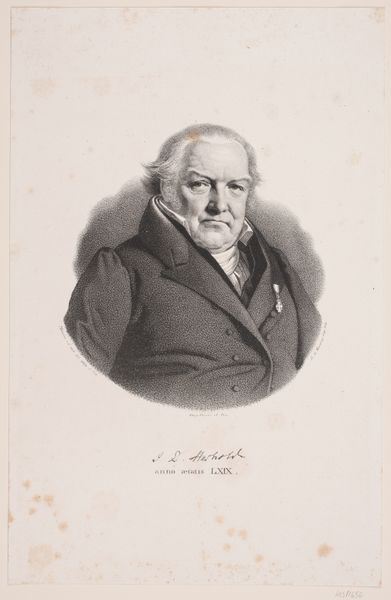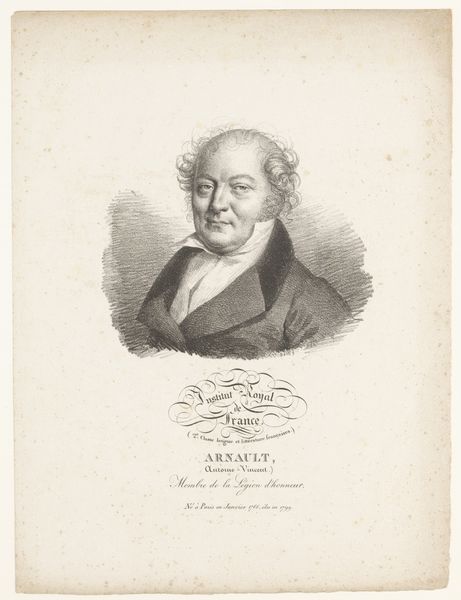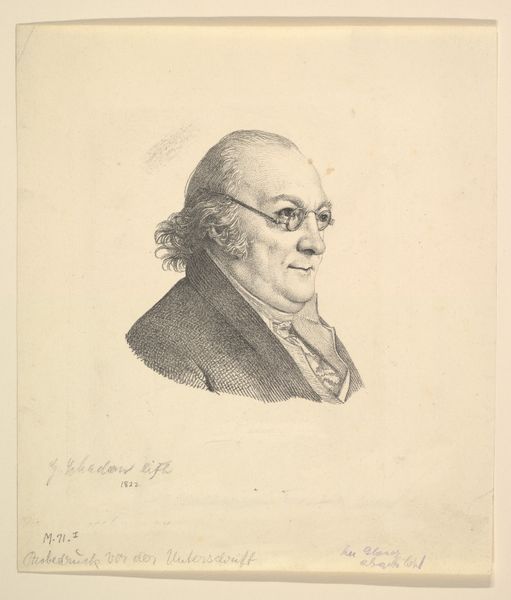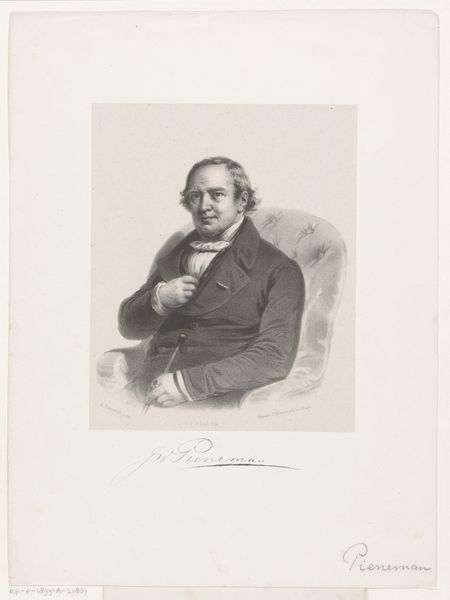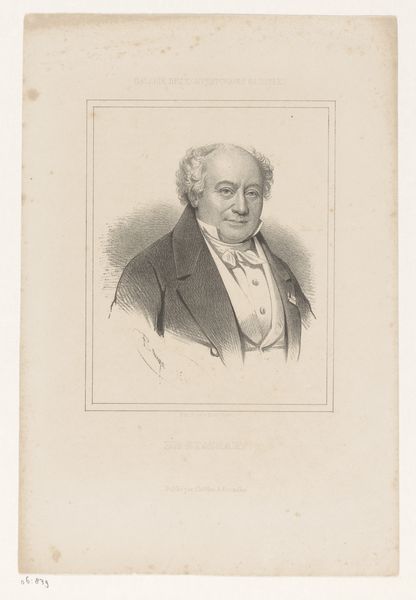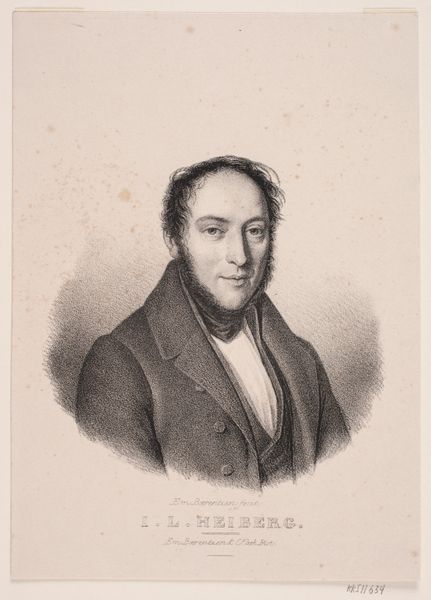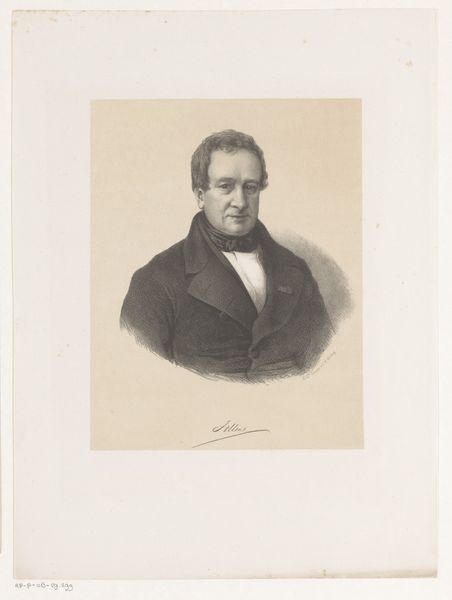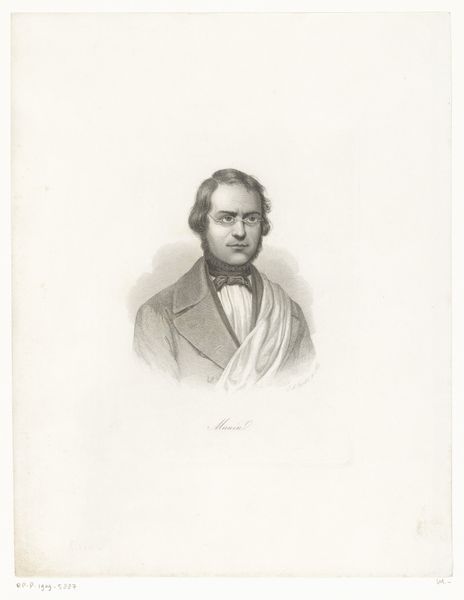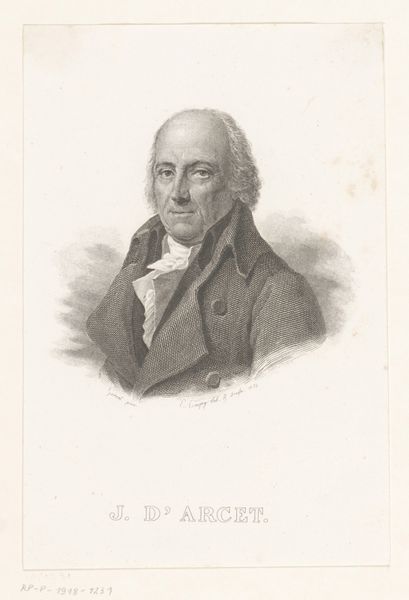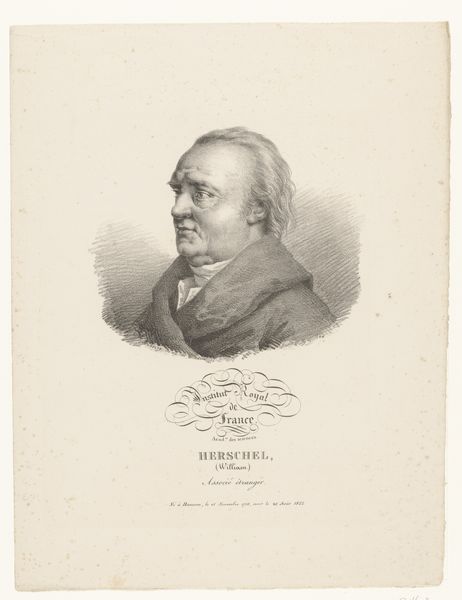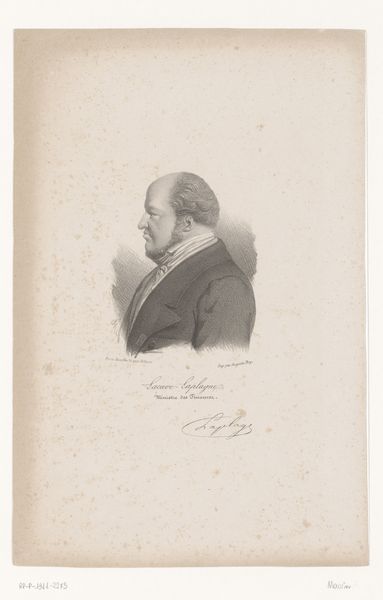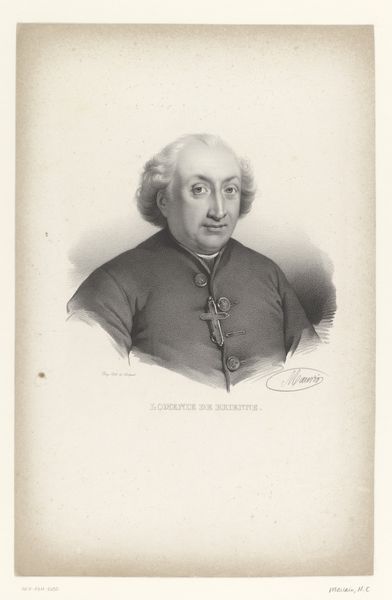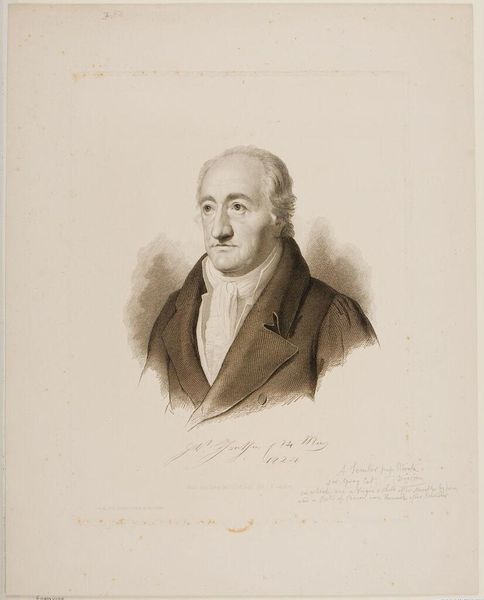
lithograph, print
#
portrait
#
pencil drawn
#
lithograph
# print
#
pencil drawing
#
portrait drawing
#
realism
Dimensions: 350 mm (height) x 250 mm (width) (bladmaal)
Curator: This is a lithograph portrait of J.C. Wendt, created in 1838 by Frederik Ferdinand Helsted. It's part of the collection at the SMK, the National Gallery of Denmark. Editor: Immediately, I’m struck by its rather austere and formal tone, fitting for its time I suppose, but it also communicates an interesting depth, particularly in the shadowing around the eyes and jawline. Curator: It’s a fantastic example of the Realism movement that was gaining momentum in the early 19th century. You see the attention to detail in replicating Wendt’s features, giving us an apparently unidealized, authentic view of the subject. Editor: Agreed, observe the materiality: the delicate hatching brings a certain level of sophistication in the modelling. The composition places Wendt off-centre, and that adds to the character portrayed by the piece; yet, despite his rather piercing gaze, there is a sort of vulnerability implied. It isn't merely documenting his likeness. Curator: Consider how the burgeoning middle class sought representation, seeking a counter-narrative to aristocratic portraiture. Lithography offered a reproducible, somewhat accessible way to depict these faces and circulate their imagery within society. It democratizes image production, in some small way. Editor: Good point, but that's something often left out in stylistic analysis of portraits. How its style fits the message: in its design, it exudes a confident but somewhat stern gaze. Also consider the effect the clean-shaven face would have in this period, how this projects order and professional demeanour. The interplay of light and shadow models the figure with clarity but not dramatic contrast. Curator: Certainly, a careful construction. As you noted, it’s not meant to shock, it's made to inform in a society becoming newly defined, especially in its bourgeoise identities. It captures an epoch, but within that epoch, an ordinary individual who participates in constructing it, a symbol for its change and social progress, or the lack of it. Editor: It makes one ponder how an everyday person of the time could view this and feel empowered by such image in contrast to its artistic elements that communicate this sentiment. Curator: Exactly. It showcases the powerful dialogue between artistic intention and the emerging self-awareness of a changing society. Editor: And it reminds me, the story of art is never simply aesthetic but deeply enmeshed with broader historical currents.
Comments
No comments
Be the first to comment and join the conversation on the ultimate creative platform.
